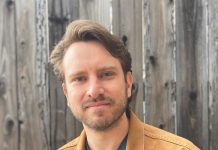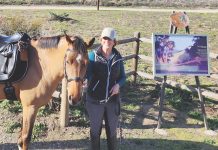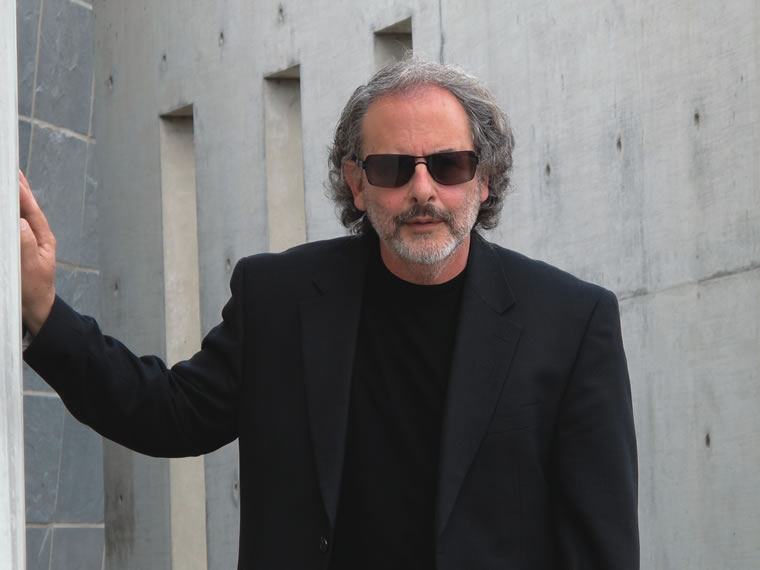
As well-dressed groups chat and mingle in Watermarc restaurant’s private dining room upstairs, evening light filters through the frosted glass ceiling, the glass doors are wide open, trees outside are covered in lights, and everywhere there are tasteful touches of brick, wood, steel, concrete and orange electric light. It feels like a touch of New Orleans in the heart of Laguna Beach.
While the partygoers may appreciate the atmosphere, they may not know that Mark Singer is the architect responsible for creating this space. In fact, over the span of three decades, he designed hundreds of custom homes, restaurants and art galleries in and around this coastal community. The longtime Laguna Beach resident died Sept. 17, 2015, but his work and influence can still be seen in the town’s contemporary buildings—sleek lines, floor-to-ceiling windows, sustainability, minimalism and the use of exotic woods, sturdy glass and solid concrete.
“Without question, he was a major influence on Laguna Beach architecture,” says Anders Lasater, a Laguna architect who worked in Mark’s office for nearly 10 years. “There really wasn’t modern architecture in Laguna Beach before Mark. He brought a language which was interesting and innovative for the time.”
Neela Kashyap, another longtime associate, says Mark was not only a skilled architect but a mentor and father figure. “He was a legend. He really made a difference,” Neela says. “… He always considered every project of his to be special. It was like his baby. It was a pleasure working with him all these years, and I learned a lot.”
Mark arrived in Laguna Beach in 1977, a time when the residential landscape was dominated by 1960s and 1970s bungalows and cottages. Traditionalists held firm to this old school California look, insisting that the bohemian, beach style be preserved. But through his persistence, preparation and sheer talent, Mark changed Laguna—one building at a time. He consistently appeared before the City Council, Planning Commission, Heritage Committee and Design Review Board with bold new plans that met resistance at first. But Mark wouldn’t take “no” for an answer.
“He had sort of a monotone, which worked to his advantage,” Anders recalls. “Councils would say, ‘OK, Mark. Go ahead.’ People just wanted him to shut up. The truth is, he got them approved because he worked his tail off. His methodology of a very dry presentation ended up being a strength.”
John Stanaland, a Laguna real estate agent who has sold a couple dozen Mark-designed homes, says the architect’s reputation has allowed sellers to place a premium over other, similarly located properties. One of his residences on Ocean Front sold a few years ago for $14,150,000. “He was a complete visionary, truly ahead of his time,” says John, who knew and worked with Mark. “He was an artist. He did bring that modern element to town. He brought that new modern edge.”
From Humble Beginnings
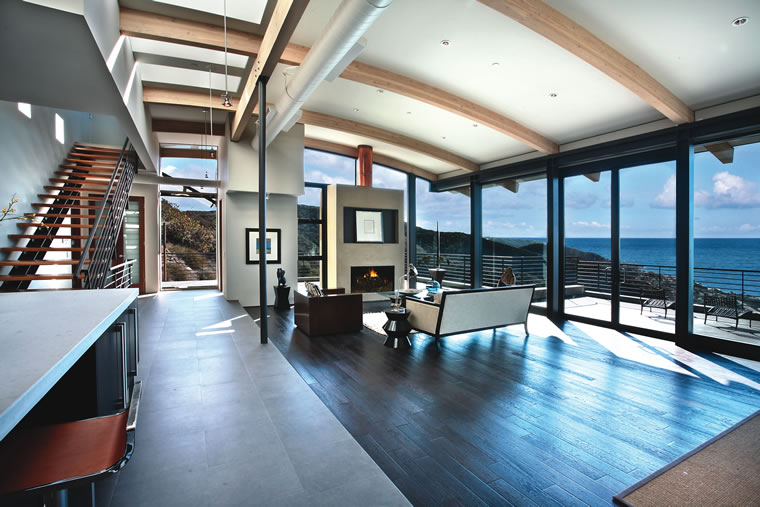
The son of a carpenter, Mark was born July 31, 1948, on the Lower East Side of New York City. In 1957, his family moved to Baldwin Hills in Los Angeles, where he would occasionally join his friends playing on construction sites. At the local library, he discovered a book about architect Frank Lloyd Wright, and from then on, he was hooked.
“He came from the working class and started from the bottom,” says Mark’s son Ryan Singer, also a Laguna-based architect. “He knew how to save money and work hard.”
Mark received an engineering degree from California State University, Los Angeles, then went into construction, working for Orange County developer E.O. Rodeffer. Mark got his contracting license and eventually took the state architecture exam.
“No one gave my dad anything,” says daughter Jessica Berman. “He grew up with nothing. He wanted that work ethic for [me and] my brother.”
Mark’s first major project in Laguna Beach was his own house, which he completed in 1978. He would continue designing and building houses, drawing from the influences of Frank Lloyd Wright, Richard Neutra, Le Corbusier, John Lautner and Rudolph Schindler.
Like several of those architects, Mark wanted to create structures that harmonized with nature and the natural surroundings.
“He knew what it meant to be on a hillside,” Anders says. “He wanted to create an oculus or aperture to view the landscape. That was his greatest influence—he brought that sense of working with the landscape, with the site.”
Mark designed and built a number of houses at Top of the World, incorporating expansive views of the coastline. After the devastating fire of 1993, Mark obtained a substantial number of commissions, as property owners wanted to rebuild with a fresh, new look. For his designs through the years, he won nearly 20 awards from The American Institute of Architects OC chapter (AIA), including honors for his own home—the first one he built on a piece of Balboa Avenue property in 1990.
On that same land near Arch Beach Heights, he later built a second home that’s also notable for its design and panoramic view of the Pacific Ocean, Saddleback Mountain, Catalina Island and Palos Verdes; this residence’s approach and focus is representative of many of Mark’s other projects. “I wanted a timeless design that was sensitive to the natural surroundings,” he told Laguna Beach Magazine in 2012 about his own home’s style. That same year, Mark received the John S. Bolles Fellowship Award from the AIA California Council for his commitment to the industry through service on the organization’s board.
Most of his homes feature bold, geometric, minimalist designs; floor-to-ceiling windows; strategic use of wood, concrete, glass and steel; handmade furniture; and inclusion of the natural environment. In one case, he kept an old oak tree that may have been hundreds of years old in a space that was supposed to be a spare courtyard.
“He thought it would have been terrible to cut it down,” Ryan recalls. “He left it, and made the courtyard very much about the tree.”
Architectural Eateries
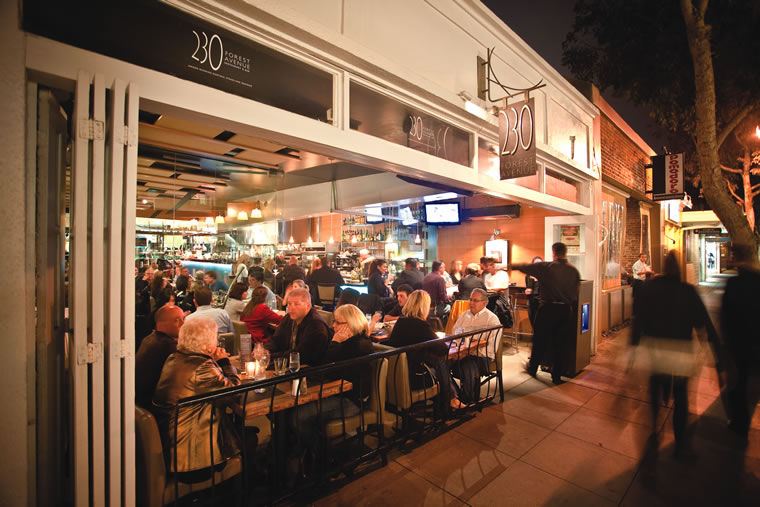
But private homes weren’t his only projects. Mark designed commercial spaces such as art galleries, the clubhouse at The Strand in Dana Point and Laguna restaurants including 230 Forest Avenue, Watermarc, Ruby’s Diner and the old Renaissance Cafe.
He also designed the three Opah restaurants in Irvine, Rancho Santa Margarita and Aliso Viejo (the only location that still operates today.) He was an active partner in three of the restaurants: 230 Forest Avenue, Watermarc and Opah. “He would dine here often,” says Erica Donnelly, general manager of 230 Forest Avenue. “He was just such an amazing, strong man, but with a gentle soul.”
Joseph Guillena, director of operations at the three restaurants, says he remembers seeing Mark eat at Watermarc on Thursday afternoons, before Design Review Board meetings. Mark eventually became a member of the board he tussled with.
“The work speaks for itself,” Joseph says of the Watermarc space. “Upstairs can become a private dining room. We host a lot of private dinners for up to 40 guests, probably once a week or so. … With all the lights inside and out, it looks really cool. It almost feels like you’re somewhere else.”
A Quiet Force

Mark was only 67 when he died, after a diagnosis of pancreatic cancer nearly one-and-a-half years earlier. But friends and family say he was active and discussing work all the way up to the night before.
“He expected excellence from everyone that he worked with,” Ryan says. “He demanded the best, always. He worked really hard, and was always educating himself. Anyone he would talk to in the field, they all respected him. He had friends in high places.”
Mark is also remembered as being generous with his friends. Anders recalls receiving a gift of handmade furniture from Mark as a wedding present and feeling deeply touched. It was through his craft and heartfelt gestures like this that he often expressed himself.
“Mark was a quiet person. That’s not because he didn’t have a lot to say,” Anders says. “He chose how he spoke very thoughtfully. He was also a master woodworker. His hands were the voice that Mark spoke most forcefully with. Mark’s voice came from building buildings.”
In addition to those structures standing as a reminder of his legacy in town, Mark is remembered by many in Laguna and survived by family members including ex-wife Myriam, son Ryan, daughter Jessica, four grandchildren and sister Flori Turchin.
—Written by Richard Chang



